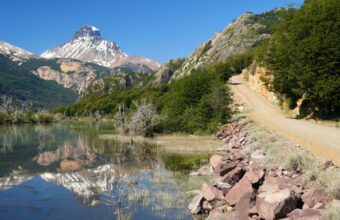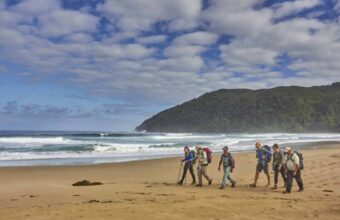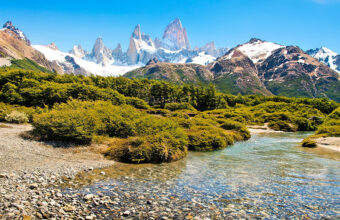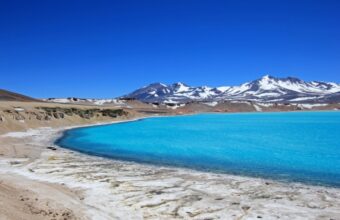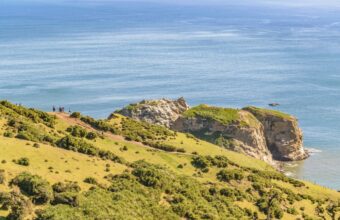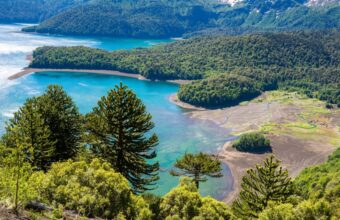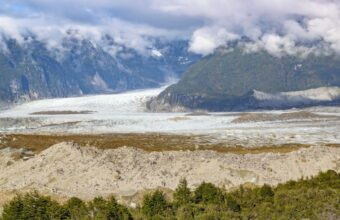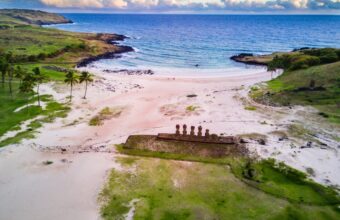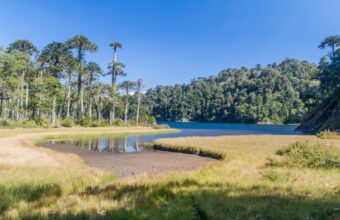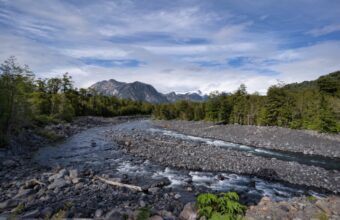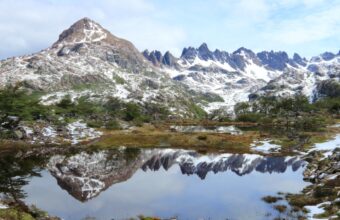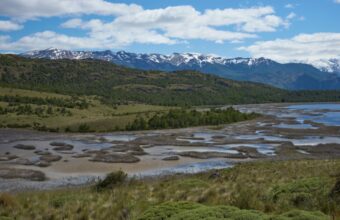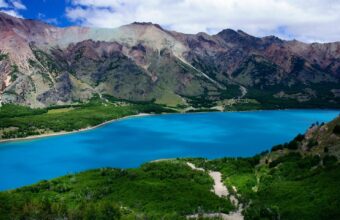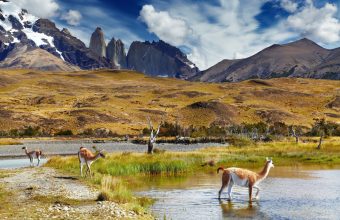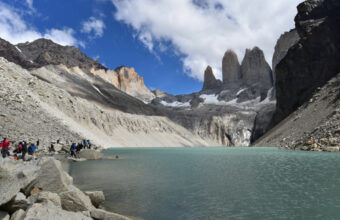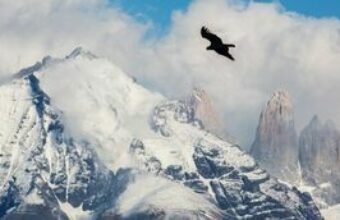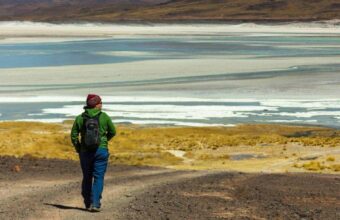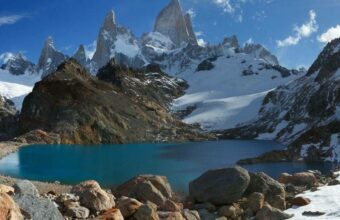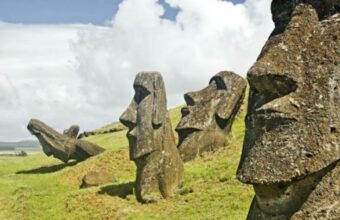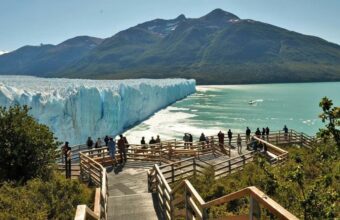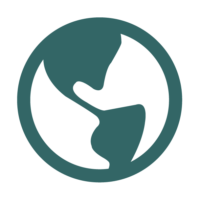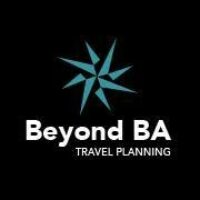Hiking in Chile
An expert guide to the best treks and hikes in Chile
A country to which superlatives can do no justice, Chile is probably my favourite place on earth for hiking and trekking.
With virtually all the world's landscapes packed into one slender stretch of land, the scenery oscillates between arid desert, tropical islands, and piercing mountains, volcanoes and glacial lakes; of which a whopping 21% is protected by law.
And, with much of Chile’s natural areas unspoiled by roads or heavy infrastructure, the best way to explore – the only way, in my view – is by foot.
I’ve been travelling to Chile for eight years as a travel journalist and guidebook author. In my three years living in the country and multiple visits since, I’ve explored pretty much every key hiking destination and have been bowled over by both the beauty of the landscapes but also the general accessibility of the hiking.
Sure, Patagonia and Torres del Paine are well known for their flagship multi-day treks, but beyond that the hiking in Chile is relatively straightforward. You won’t find any extreme, high-altitude expeditions here as with other trekking heavyweights like Peru or Nepal. In many places, Chile is more about day hikes and more gentle walking holidays. You certainly don’t need to sign up for a mega trek to enjoy what the country has to offer.
Ready to go? Here's my essential guide to trekking and hiking in Chile.
The best treks and hikes in Chile
Chile's most popular – and some lesser-known – treks
If you're going trekking or hiking in Chile, chances are you'll be heading to Torres del Paine. The blockbuster national park deserves its fame, but it's far from the only show in town. Here are a few other treks and hikes that I'd highly recommend:
-
Cerro Castillo National Park
-
Mapu Lahual Indigenous Parks
-
Torres del Paine National Park
View trips -
Atacama Desert
View trips -
Chiloé Island
-
Conguillío National Park
View trips -
Puerto Río Tranquilo
-
Easter Island (Rapa Nui)
View trips -
Huerquehue National Park
-
Pumalín Douglas Tompkins National Park
-
Puerto Williams
-
Patagonia National Park
-
Jeinimeni National Reserve
-
Torres del Paine National Park
View trips -
Torres del Paine National Park
View trips
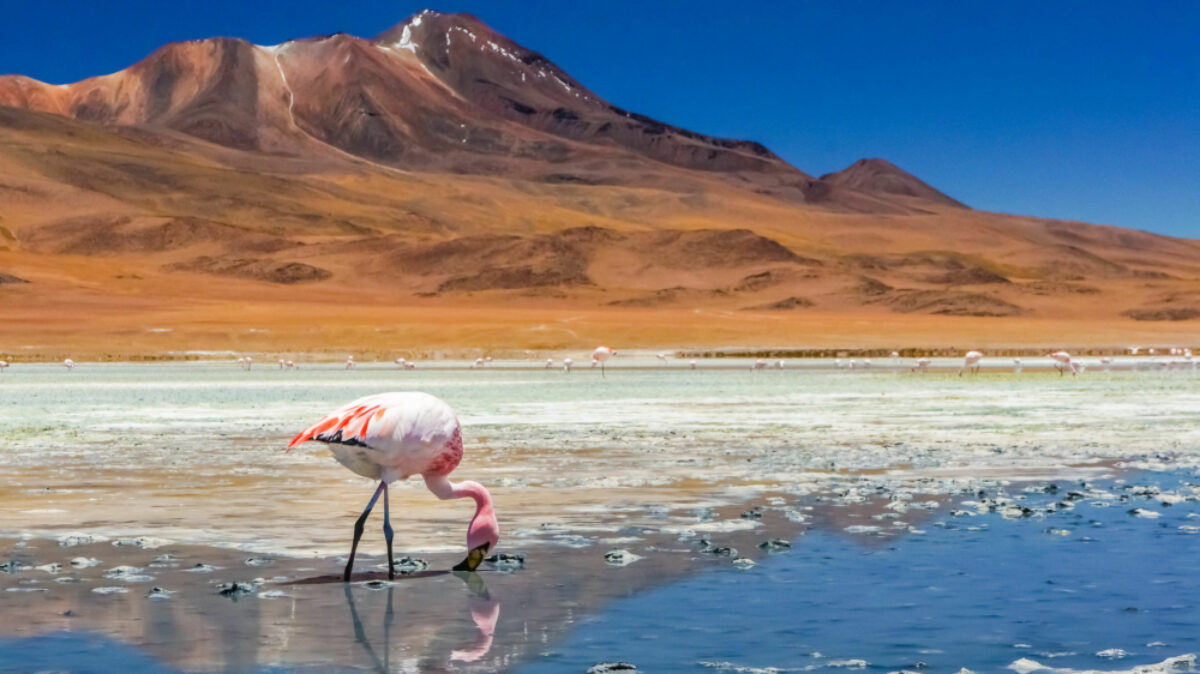
The Atacama Desert is one of Chile's preeminent hiking locations
Hiking in Chile: Need to know
Everything you wish you’d known before booking
There's more to hiking in Chile than Torres del Paine
Parts of Chile, like many places around the world, have become a victim of their own tourism successes. Interest in Torres del Paine far outstrips any of Chile’s other marvellous hiking locations, and so the mainstream travel industry has focused on marketing this one place at the expense of virtually everywhere else. As a result, Torres del Paine can sometimes feel like it’s bursting at the seams with hikers.
My standout piece of advice to anyone coming to hike in Chile is to look further afield, especially if you’re more interested in solitude and crowd-free campsites than bragging rights. Yes, Torres del Paine deserves its fame, but there are plenty of incredible trekking alternatives which get a fraction of the visitors.
I found the scenery along the Carretera Austral – with its 1,000-year-old alerce trees, wildlife-packed temperate rainforests and glut of glacier-wrapped mountains – more than comparable with Patagonia’s more famous national park.
Hiking in Chile's Lakes District and Chiloé – one of my favourite parts of the country – showcase the country’s epic scenery just as well, but without the peak season crowds.
Then there’s Cerro Castillo National Park, which has been billed as the “new Torres del Paine” for its similarities minus the blockbuster popularity.
Treks vs hikes vs walking holidays
Chile is rare in that it is marketed as a destination for both trekking and walking holidays. There are true multi-day treks in Torres del Paine, Parque Tantauco and elsewhere in Patagonia, and countless day hikes across the entirety of the country. Most of these day hikes can be done solo, while in the more popular tourism regions such as Atacama and the Lakes District you can book onto guided hiking tours.
Finally, lots of companies run walking holidays to Chile. These tours are typically run as “multi-centre” tours. You’ll visit several different locations and do guided day hikes and walks at each place, with off days and other activities programmed into the itinerary. Organised self-guided walking holidays in Chile aren’t as common as they are in Europe.
Hiking in Chile FAQs
Your questions, our expert answers
Question
When is the best time to go trekking and hiking in Chile? Is it year-round? What are the best and worst months?
Answer
Because of its southerly latitude, Patagonia has a relatively short trekking season, with trails opening around September and closing late April—although this is typically weather dependent. Most visitors head to the national parks along the Carretera Austral and in Southern Patagonia during the Austral summer (between the months of December and February).
However, the climate in Patagonia is famously unpredictable and four seasons’ weather can be experienced in an afternoon—even during the height of summer. My usual advice is to travel during the shoulder seasons either side of Austral summer. While you can’t guarantee the weather from September through early November and late March through the end of April, you can expect to share trails with far fewer visitors.
For the Lakes District heading north, national parks are typically open year-round, although heavy rains and snow can close trails between June and August.
Question
Are there any less popular alternatives to Torres del Paine for multi-day trekking?
Answer
Most national parks in Chile have multi-day hiking trails, however, none have the same tourism services as found in Torres del Paine. As a result, they’re far quieter and more likely to fulfil the vision of trekking in remote, untouched places.
Sendero Transversal in Chiloé’s Parque Tantauco is a great alternative to Torres del Paine National Park. The scenery couldn’t be more different: set within the thick, damp Valdivian temperate rainforests, this trail won’t show you mountains, but you will encounter 2,000-year-old forests and—if you’re lucky— rare, endemic species of pudú and Darwin’s frog.
Alternatively, experienced trekkers armed with GPS and lightweight camping gear will find the five-day Dientes de Navarino trek a welcome challenge. Circumnavigating the toothy Dientes de Navarino mountains as it strikes out across the otherwise inaccessible interior of Patagonia’s Isla Navarino, it’s the southernmost trek in the world—and promises staggering views and bog tramping in equal measures.
Question
Where's your favourite place to hike in Chile?
Answer
Southern Patagonia and, primarily, Torres del Paine, are Chile’s most renowned trekking destinations. However, my favourite places are the national parks that run along Ruta 7, or the Carretera Austral.
Wedged between the Andes Mountains in the east and the Chilean fjords in the west, this remote road winds between what I consider some of Chile’s most beautiful national parks:
Add in the fact that it receives far fewer visitors than those in Southern Patagonia—while still serving up a range of volcanoes, glaciers and rare wildlife—and the Carretera Austral is the true Patagonia hiking mecca.
Question
Can you go solo trekking in Chile without a guide?
Answer
Most day hikes in Chile’s national parks are possible without a guide. Similarly, routes such as the W and O treks in Torres del Paine National Park, the Cerro Castillo Traverse and the Sendero Transversal in Parque Tantauco can be trekked independently. More extreme routes, such as the Dientes de Navarino on Isla Navarino, and the Aconcagua Summit are best hiked with a local expedition company.
Unfortunately, I’ve experienced first-hand how trails are often poorly marked, a legacy of the considerable underfunding of the national parks governing body, CONAF. Reliable maps are also few and far between, with the best available at the entrances to national. Outdoor hotspots such as Pucón, Puerto Varas and Puerto Natales sometimes have more accurate third-party maps available for purchase, while the free app Maps.me works without an internet connection and has been my go-to resource.
For most national parks you now need to book a ticket in advance through the official—and irritatingly glitchy—booking website. You’ll receive a QR code confirming your booking; download this when you’ve got internet access. Many national parks have little to no phone coverage.
Question
Is Chile safe? How about for solo female travellers?
Answer
Chile, as a rule, is a safe place to travel, although increasing levels of crime in the capital, Santiago, means it’s worth taking common sense precautions. However, once you get out into the national parks, the biggest consideration is getting hold of a map, as trails can sometimes be poorly marked and difficult to follow.
Many of the more intrepid multi-day paths are not for inexperienced hikers. There is a serious risk of getting lost—or worse—without GPS, good-quality camping equipment and enough food and water to ride out a couple of days if you end up stuck in inclement weather conditions.
Women can hike alone in Chile, particularly on routes such as the W Trek and in national parks such as Huerquehue that have plenty of visitors. For other destinations, it’s better to hike with a partner, regardless of your gender, because routes are remote and it can be difficult to get assistance if you become injured.
Question
What camping and trekking gear can I rent?
Answer
Camping equipment, including rucksacks, tents, stoves, hiking poles and sleeping bags are available to rent in a couple of key locations, including Santiago, Puerto Varas, Coyhaique and Puerto Natales. Outside of these places, it’s possible to buy trekking gear but I’ve found it can cost at least double what you’d pay to buy similar equipment back home.
Question
Is altitude sickness a problem while trekking in Chile?
Answer
Surprisingly, given that the Andes Mountains trace the western edge of Chile from tip to toe, trekking elevations are rarely higher than 1,200 metres. Altitude sickness is therefore not an issue in Chile. The only exception is the Aconcagua Summit trek, where you reach 6,961 metres above sea level at the top.

